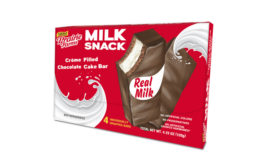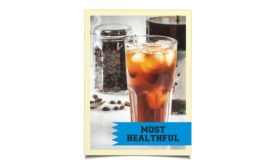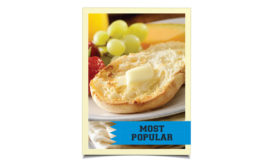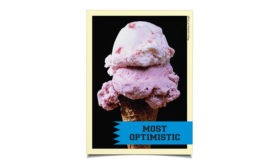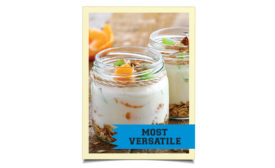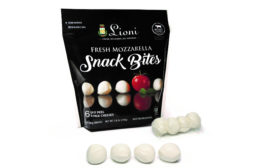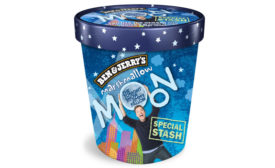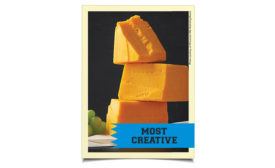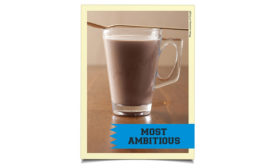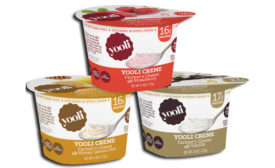Dairy Foods & Beverages
Refrigerated dairy desserts
The refrigerated snack bars are two-layer crème-filled chocolate cake bars dipped in chocolate.
Read More
State of the Industry 2017: Nondairy beverages are quenching more than thirst
Body-benefiting ingredients, sugar reductions and natural and organic formulations earn the nondairy beverage category the title of MOST HEALTHFUL.
November 13, 2017
State of the Industry 2017: Butter consumption is growing
Butter earns the title of MOST POPULAR as per-capita consumption continues to grow.
November 10, 2017
State of the Industry 2017: Ice cream makes a comeback
Riding a two-year growth wave and boasting a slew of innovative new products, the ice cream segment takes the title of MOST OPTIMISTIC in dairy’s class of 2017.
November 8, 2017
State of the Industry 2017: Cultured dairy does it right
Cultured dairy earns the MOST VERSATILE title for its multiple eating occasions, diversity and creative use in recipes.
November 6, 2017
Snacking cheese
Lioni’s on-the-go fresh mozzarella bites
The cheese is sold in resealable pouches with six individual vacuum-sealed packages.
November 4, 2017
Ice cream
Ben & Jerry’s introduces ‘Special Stash’ flavor with Jimmy Fallon: Marshmallow Moon
The limited-time flavor is the second exclusive flavor for The Tonight Show star.
November 3, 2017
State of the Industry 2017: Consumers say more cheese, please
With an influx of innovative snacking options, convenient packaging, specialty cheeses and unique flavors, the cheese category claims the MOST CREATIVE title this year.
November 3, 2017
State of the Industry 2017: Milk is on trend and getting the word out
The milk sector earns the class of 2017’s MOST AMBITIOUS honors as it taps into trends in an attempt to reverse a multi-year decline in consumption.
November 2, 2017
Creamy spoonable cheese
Yooli Foods makes artisan-style farmer’s cheese cremes
The soft and fresh spoonable cheeses are high in protein.
November 1, 2017
Stay ahead of the curve. Unlock a dose of cutting-edge insights.
Receive our premium content directly to your inbox.
SIGN-UP TODAYCopyright ©2024. All Rights Reserved BNP Media.
Design, CMS, Hosting & Web Development :: ePublishing
